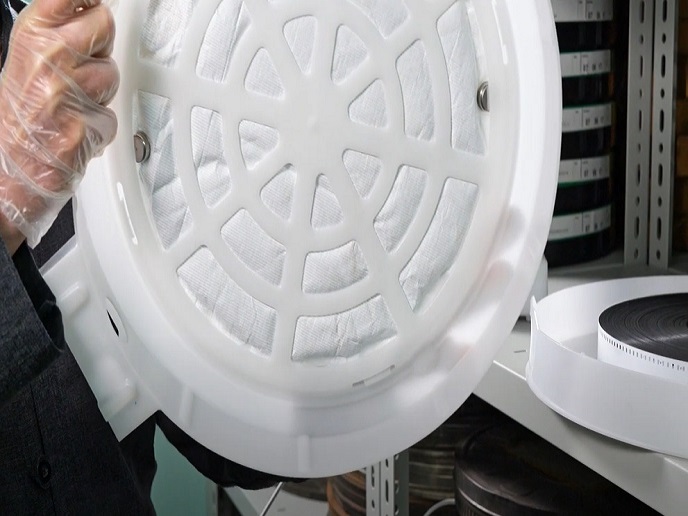Innovative packaging solution for preventive conservation of cultural heritage
The most representative arts of the last two centuries such as films, photography and posters were made on supports derived from cellulose. Unfortunately, this is a chemically unstable material that has caused the destruction of a large part of this European cultural heritage. It also threatens the long-term conservation of other art pieces owing to the decomposition of nitrocellulose(opens in new window) and the release of acetic acid from cellulose acetates(opens in new window), also called the ‘vinegar syndrome’. Warm and humid places create favourable conditions for the ‘vinegar syndrome’, causing the cellulose acetate to decompose. As the film starts to decay, it breaks down into the two main substances that formed the base material in the first place: cellulose and acetic acid – the same ingredient in household vinegar that gives its distinctive smell and taste. Conservators employ two approaches when planning treatments to extend the useful lifetime of cultural materials: preventive or passive and active or interventive. However, when cellulose derivates and other components of films or photos start to degrade, the process cannot be prevented, reversed or stopped but only inhibited or slowed. Inhibitive conservation of cellulose derivatives involves eliminating the factors that cause degradation. These include light, oxygen, acids, fungi and humidity, freezing as well as any breakdown product that accelerates degradation.
The answer to the cultural heritage degradation and preservation
To tackle these challenges, the EU-funded NEMOSINE(opens in new window) project developed a modular system for preventive conservation, specifically of cellulose-based films. “NEMOSINE improves the traditional storage solutions, such as freeze storage (below 5 degrees Celsius), by means of an innovative package that allows energy savings and extends conservation time,” notes project coordinator Carracedo Fernández. The smart film box consists of an acetic acid absorbent based on metal organic framework materials to capture the gases released by the film, and an electrochemical sensor to monitor the acetic acid concentration inside the film box. Another sensor collects ambient condition data. “NEMOSINE aids in the preventive conservation of film and photographic collections, creating a degradation model that allows to film archives to anticipate the deterioration of cultural heritage artefacts,” remarks Fernández. Multiscale models correlate the sensor signals with the degradation level of the artefact based on cellulose derivatives. The sensor sends these data to the cloud, where software processes them along with data related emitted gases. The programme assesses the conservation state of the material and alerts conservators to risk situations so that appropriate conservation decisions can be taken.
Preservation and life extension of cultural artefacts
NEMOSINE consortium is composed of 23 partners across Europe. Research groups, film archive and industrial partners have all worked together to develop this innovative solution for the preservation of cultural heritage works. The solution was tested in an operational environment. Results were satisfactory, but partners found room for improvement in its performance. Project consortium plan to develop a premium version with enhanced characteristics. The newly developed smart package is expected to foster innovation, creativity and economic growth in the EU cultural sector, which currently employs 8.7 million people(opens in new window).







